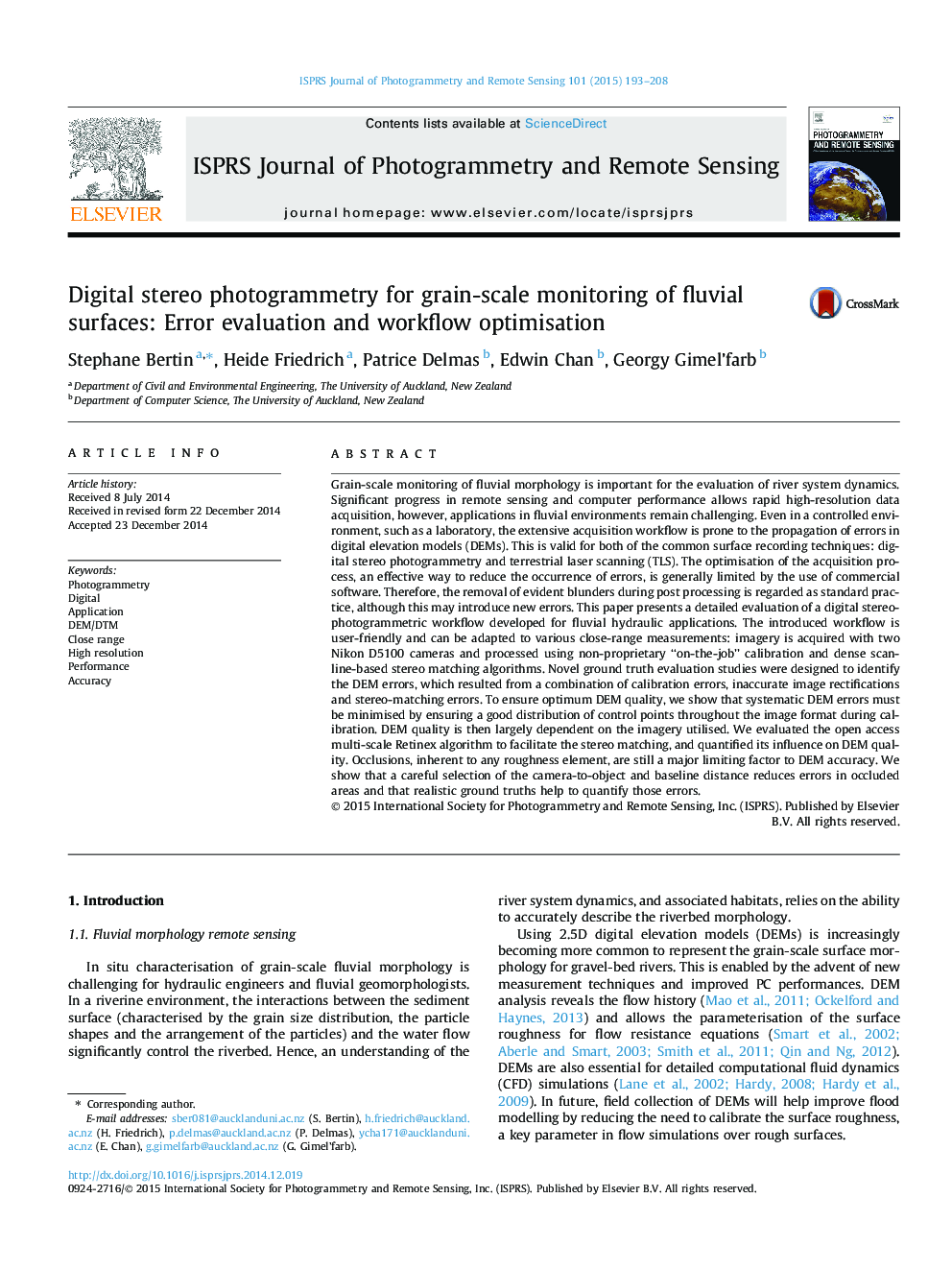| کد مقاله | کد نشریه | سال انتشار | مقاله انگلیسی | نسخه تمام متن |
|---|---|---|---|---|
| 6949510 | 1451273 | 2015 | 16 صفحه PDF | دانلود رایگان |
عنوان انگلیسی مقاله ISI
Digital stereo photogrammetry for grain-scale monitoring of fluvial surfaces: Error evaluation and workflow optimisation
ترجمه فارسی عنوان
فوتوگرامتری دیجیتال استریو دیجیتال برای نظارت بر مقیاس های سطح رطوبت: ارزیابی خطا و بهینه سازی گردش کار
دانلود مقاله + سفارش ترجمه
دانلود مقاله ISI انگلیسی
رایگان برای ایرانیان
کلمات کلیدی
موضوعات مرتبط
مهندسی و علوم پایه
مهندسی کامپیوتر
سیستم های اطلاعاتی
چکیده انگلیسی
Grain-scale monitoring of fluvial morphology is important for the evaluation of river system dynamics. Significant progress in remote sensing and computer performance allows rapid high-resolution data acquisition, however, applications in fluvial environments remain challenging. Even in a controlled environment, such as a laboratory, the extensive acquisition workflow is prone to the propagation of errors in digital elevation models (DEMs). This is valid for both of the common surface recording techniques: digital stereo photogrammetry and terrestrial laser scanning (TLS). The optimisation of the acquisition process, an effective way to reduce the occurrence of errors, is generally limited by the use of commercial software. Therefore, the removal of evident blunders during post processing is regarded as standard practice, although this may introduce new errors. This paper presents a detailed evaluation of a digital stereo-photogrammetric workflow developed for fluvial hydraulic applications. The introduced workflow is user-friendly and can be adapted to various close-range measurements: imagery is acquired with two Nikon D5100 cameras and processed using non-proprietary “on-the-job” calibration and dense scanline-based stereo matching algorithms. Novel ground truth evaluation studies were designed to identify the DEM errors, which resulted from a combination of calibration errors, inaccurate image rectifications and stereo-matching errors. To ensure optimum DEM quality, we show that systematic DEM errors must be minimised by ensuring a good distribution of control points throughout the image format during calibration. DEM quality is then largely dependent on the imagery utilised. We evaluated the open access multi-scale Retinex algorithm to facilitate the stereo matching, and quantified its influence on DEM quality. Occlusions, inherent to any roughness element, are still a major limiting factor to DEM accuracy. We show that a careful selection of the camera-to-object and baseline distance reduces errors in occluded areas and that realistic ground truths help to quantify those errors.
ناشر
Database: Elsevier - ScienceDirect (ساینس دایرکت)
Journal: ISPRS Journal of Photogrammetry and Remote Sensing - Volume 101, March 2015, Pages 193-208
Journal: ISPRS Journal of Photogrammetry and Remote Sensing - Volume 101, March 2015, Pages 193-208
نویسندگان
Stephane Bertin, Heide Friedrich, Patrice Delmas, Edwin Chan, Georgy Gimel'farb,
